The nuances of planting gooseberries in the spring in open ground
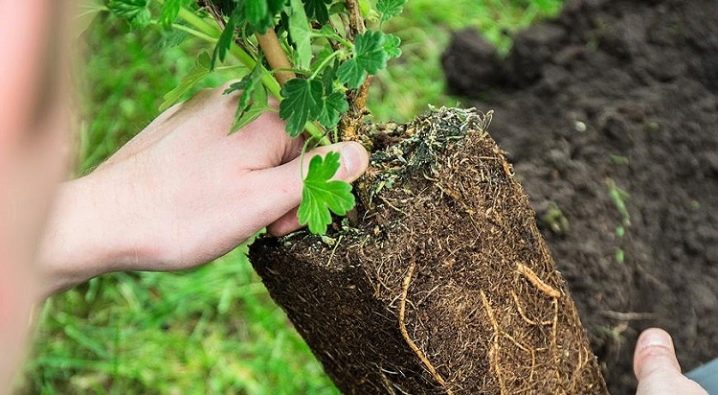
Many people like the slightly sour and unusual taste of gooseberries. Delicious jams and preserves are made from it. Berries contain a large amount of vitamins C, E, many micro- and macroelements.
It is not surprising that every gardener wants to have at least a few bushes of this amazing plant on his site. How to plant gooseberries correctly in the spring, what place is better to choose for planting and how to care for it, we will tell you in our article.
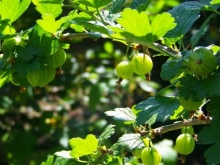
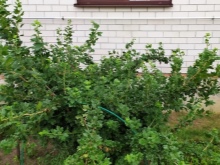
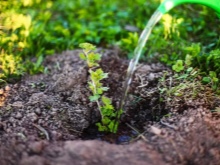
What month can you plant?
Someone prefers to plant shrubs and trees in the fall, while others in the spring. Each landing time has its own advantages and disadvantages. The advantages of springtime include the abundance of moisture in the soil that has accumulated after the snow melts. The transplanted plant will not dry out, even if it is not possible to arrive at the dacha in time and water the seedlings. Thanks to moisture, the plant takes root quickly. The disadvantages of spring planting include an insufficient selection of seedlings for sale, the autumn assortment is always larger. In regions with capricious weather, it is possible to choose the wrong time for transplanting gooseberries. If planted early, frosts can return and damage the plant. Seedlings planted too late are sluggish and poorly developed.
How to find the golden mean of the planting period and do everything right depends on the climatic conditions of each particular region.
- In the south of the country - in the Stavropol Territory, in the Kuban, gooseberries can be planted from late March to early April. The specific dates are dictated by the weather and the free time of gardeners.
- In central Russia, in the Moscow region, in the Volga region, seedlings are transplanted in mid-April, when frosts are no longer expected, and hot weather is still far away.
- In the Urals, Siberia, Karelia, gooseberries are planted in open ground at the end of April and all of May, when the weather allows it.
For landing, certain conditions are required:
- it can only be carried out after the snow has completely melted;
- the soil should not have traces of freezing;
- plants are planted at a stable temperature ranging from 4 to 8 degrees;
- for landing, you need to choose a cloudy calm day with calm weather.
The main thing, when planting bushes, is to complete the planting work before the beginning of the growing season of the plant, until the buds begin to swell.
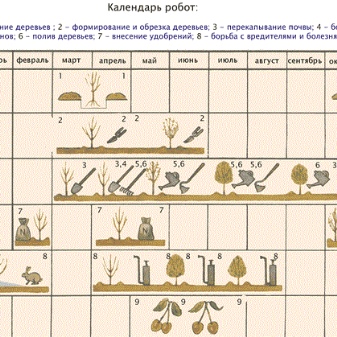
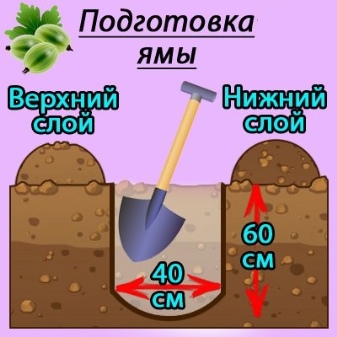
Selection and preparation of a seedling
Even before choosing seedlings, you should decide on your preferences and know exactly what type of gooseberry you need - black, green or yellow. The planting material itself is best purchased in nurseries or specialized stores. It will be a shame to wait 3-4 years before the first harvest appears and realize that you have not purchased what you wanted.
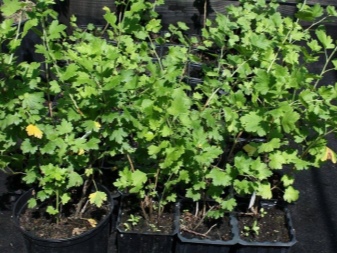
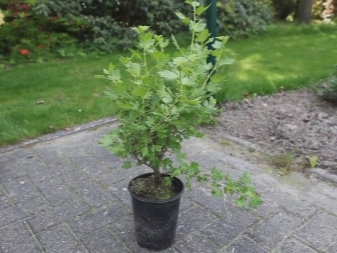
Choice
You should choose zoned seedlings, that is, suitable for growing in a particular region, only in this case it will be possible to get maximum yields from the bush. After 6-8 years, a correctly chosen gooseberry bush will yield 10 to 15 kg of berries per season. When choosing seedlings with an open root system, you need to pay attention to the following points.
- Saplings should be 1-2 years old, it is better to give preference to two-year planting material.
- The plant should be examined for disease. In a healthy bush, the bark has a uniform structure and color. A two-year-old seedling contains two or three strong shoots 20 to 40 cm long and 9-10 mm in diameter. Annual shoots have a smaller diameter - 7-8 mm.
- The root system must be well developed, at least 25 cm long and a healthy dark color.
- To check if the seedling is dry, you need to pull the thin root, if it does not break, everything is in order with the plant.
Seedlings with a closed root system are selected as follows.
- You can safely purchase both an annual and a biennial plant.
- The length of the gooseberry shoots with closed roots is 40-50 cm.
- The root system can be assessed by removing the plant from the pot; the earthen lump should be completely sprouted by the roots. If the seller won't let you reach the plant, you can move it. Well-grown roots will sit tightly in the container.
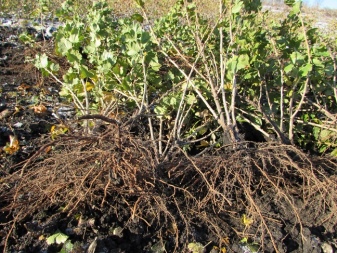
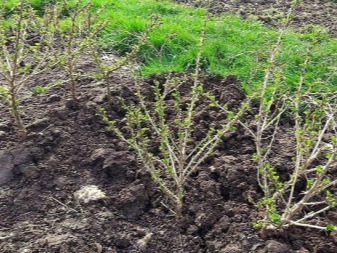
Seedling preparation
Before planting, the seedling must be carefully examined, cut off shoots with damage or signs of disease with a pruner, leave only healthy and strong branches. If you cut off the tips of the root system, the side roots will begin to grow more actively. In order for the plant to take root better and accelerate its growth, open roots should be kept a little in a root formation stimulator, for example, using the drugs "Kornevin" or "Heteroauxin".
As for the closed root system, the plant should be watered abundantly 5 hours before planting, then the bush will be easier to remove from the pot.

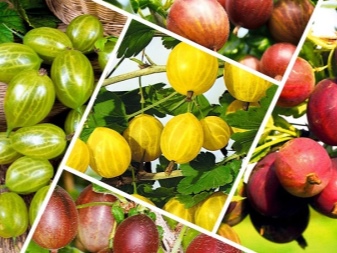
Where to plant?
In order for the gooseberry to always please with a high harvest, and not just take up space in the garden, the bush must be planted in a place that is comfortable for it. Let's take a closer look at what the plant loves and what is unacceptable for it.
- Any kind of gooseberry prefers warm, sunny places.
- Bushes do not like shade, but they have to be planted next to a fence or buildings, as plants are afraid of strong winds and drafts. The bushes should be 1.5 m away from the fence, this distance will be the golden mean, allowing the gooseberries to be in the sun and hide from the wind.
- Gooseberries react poorly to excess moisture. It cannot be planted in a lowland, where precipitation flows from all over the garden. The roots rot when the groundwater comes too close to the soil surface; when the water is located at a depth of one and a half meters, the plant feels comfortable. In a garden with damp soil, before planting gooseberries, raise the bed about half a meter in height.
- Gooseberry grows well on black soil, sandy loam and loamy soils with neutral acidity. Too acidic soil, you need to add lime mortar, chalk or dolomite flour. Clay soil is mixed with sand, and light sandy soil, on the contrary, with clay.
- The gooseberry does not like the neighborhood with currants, as they have the same preferences in nutrients obtained from the soil, and they compete with each other. In addition, their diseases are also common and can be transmitted to each other. Gooseberries grow poorly in a company with raspberries and blackberries; with their numerous shoots, these plants do not allow bushes to develop. The seedlings are difficult to tolerate the presence of trees with a large root system and a dense shade.
If you follow all of the above rules and recommendations, over time you can wait for a plentiful and tasty harvest.
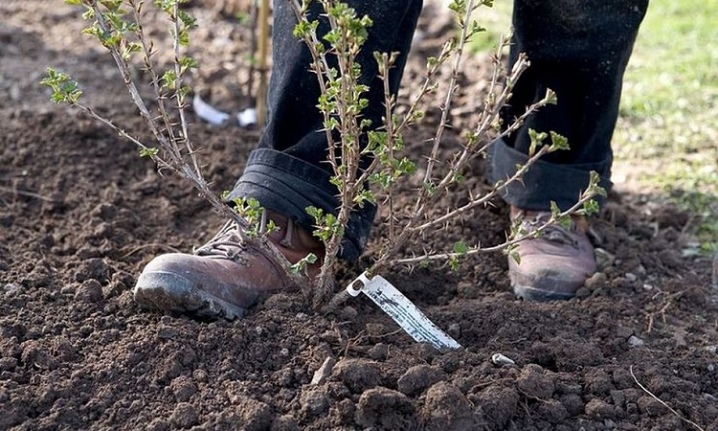
How to prepare a pit?
Before digging holes, you should prepare a dry and sunny area for them. For this, last year's branches, leaves and other debris are removed from the surface. Then the earth is dug to the depth of the shovel, the roots of the weed are removed, the soil is broken up and crushed.
When the ground is prepared, a series of depressions are dug under the bushes in 120 cm increments. Each hole should be 50 cm in diameter. The deeper and wider it is, the more fertile soil you can bring into it. At the bottom of each recess, a top nutrient layer of soil is poured 10-15 cm thick (it was removed during digging a hole). Then, to feed the plant, a backfill is placed from the following fertilizers:
- compost or humus - 7-8 kg;
- superphosphate - 2 tbsp. l .;
- potassium phosphate - 40 g;
- 150 g of chalk powder;
- manure and ash with water in the form of a liquid mixture;
- high-moor peat;
- bone meal - 400 g.
Fertilizers are mixed with fertile soil and filled 2/3 of the planting hole with the prepared composition. On top of another 5 centimeters, sprinkle with ordinary soil so that the roots do not come into direct contact with concentrated fertilizers and do not burn. The prepared recess with complementary foods is left to rest for 2-4 weeks. During this period of time, natural shrinkage of the fertilized soil occurs in the pit. It is necessary to wait until the soil subsides so that after planting the plants, voids do not form in the soil, and the roots can come into close contact with the ground, receiving nutrients from it.
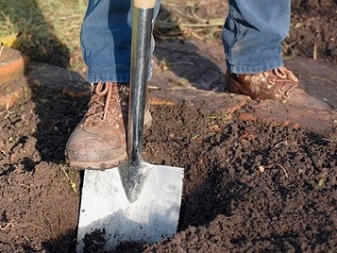
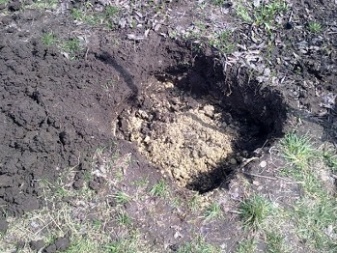
Step-by-step instruction
When starting to plant gooseberry seedlings, the following steps are performed in stages.
- In the prepared pits, in which shrinkage has already occurred, you can add a little peat with humus. This will help the water not to linger on the roots of the plant for a long time and will protect them from decay.
- Next, you need to correct the grooves according to the size of the root system of the seedlings, fill the hole with water and wait until the moisture is absorbed into the soil.
- Before planting, for a short time, the open roots are dipped in preparations that stimulate root formation - "Kornevin", "Tsikron". The plant is then placed in the center of the fossa. If the roots are closed, they are installed together with an earthen clod, simply shaken slightly.
- Next, the gooseberry bush is carefully covered with nutritious soil. This should be done by placing the seedling vertically, and not at an angle, as is the case with currants. The root collar (the place of the upper root) is instilled to a depth of 6-7 cm. Having covered the hole with earth, it must be slightly tamped to remove excess voids.
- There is no need to create a depression for collecting water under the trunk, the moisture will stagnate and harm the plant. On the contrary, it is possible to organize a landing hillock, over time it will sag and become equal to the ground surface.
- After completing the planting, pour a bucket of water under each bush.
Wet soil after watering, lightly sprinkle with dry earth and mulch, preventing the sun from quickly drying out the soil.
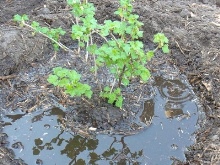
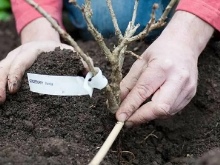
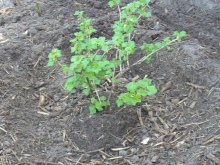
Follow-up care
Planting seedlings means half the battle to grow healthy fruit-bearing bushes, you still need to properly care for them. Leaving consists of the following steps.
- Watering. A young transplanted plant is watered on average once a week until the bush takes root. The interval between waterings is selected taking into account the weather conditions.
- Mulching. Mulch helps the plant to stay in optimal moisture conditions, protects from the earth crust, and also protects the gooseberry roots from freezing in winter. Weeds do not grow under a thick layer of mulch; over time, rotting and falling into the ground, it becomes a good organic fertilizer. Peat, hay, straw, compost, humus, sawdust are used as mulch. You can make a mixed composition and cover the soil around the bush with it, 10-15 cm high.
- Pruning. If the seedlings purchased for spring planting were not cut by the seller, the shoots should be cut yourself, leaving 4 to 6 buds on each of them (10-20 cm sprout length). With weak roots, it is generally possible to leave sprouts of small length (7-10 cm), with two or three buds. This procedure will not allow the plant to waste energy on releasing leaves, but will redirect energy to strengthen the root system and the formation of branches on the shrub.
- Fertilizers. With a properly filled planting pit and fertile soil with neutral acidity, a young plant will need only nitrogen for several years or no feeding at all, since it is already supplied with everything it needs. But if the soil is sandy, organic fertilizers will have to be applied every year.
- Weeding. In heavy clay soil, frequent loosening is necessary. In other cases, the land is loosened after rain and watering. Weeds should be removed in time, without giving an opportunity to attack the bush.
- Diseases. Gooseberries are quite disease resistant. It is better to plant several bushes, then if one of them is damaged, you can get a harvest from healthy plants. The only exception is powdery mildew, it covers the entire planted gooseberry culture, including currants, if it grows nearby. They fight powdery mildew by spraying with pesticides.
If there is enough space on the site, it is better to plant different varieties of this plant with an unequal ripening period. Then you can feast on the fruits for a long time, replenishing the body with a different vitamin composition, for example, yellow gooseberries have high vitamin E, red - vitamin C, and all varieties, without exception, contain a large amount of vitamins of group B, PP, A.
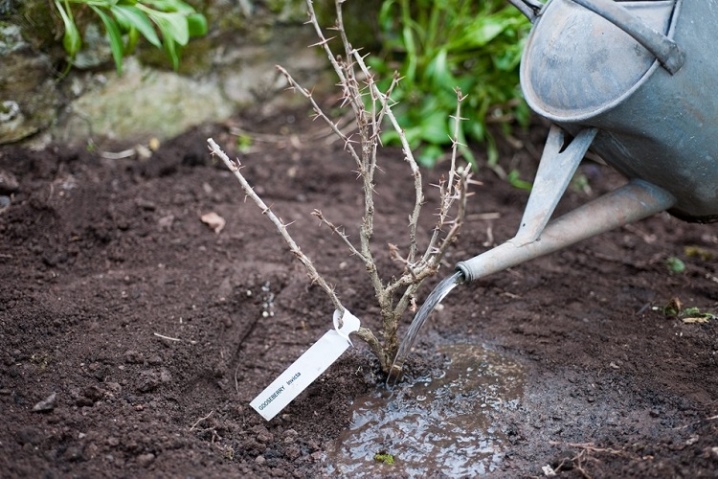













The comment was sent successfully.